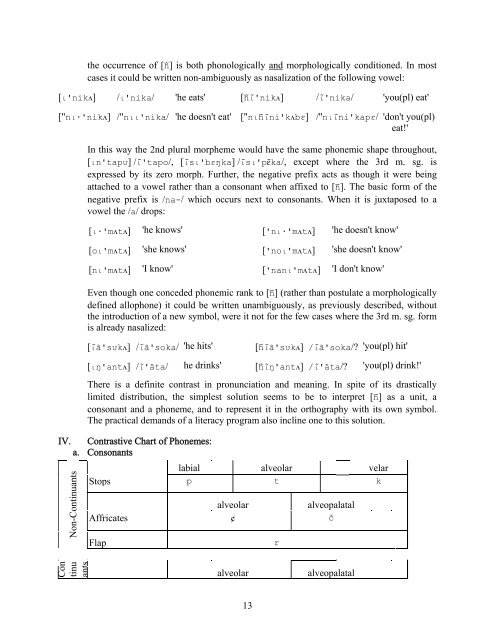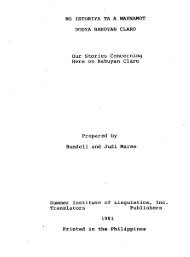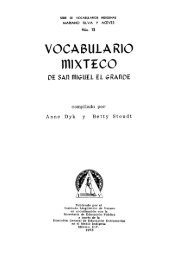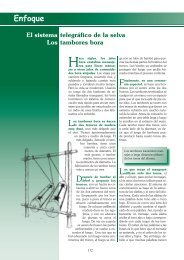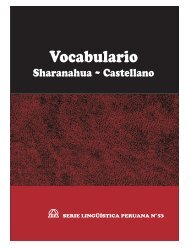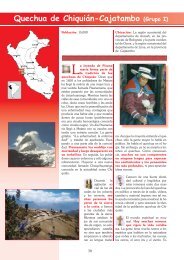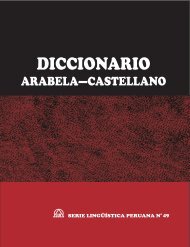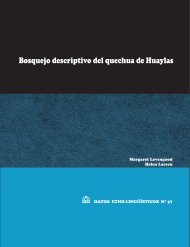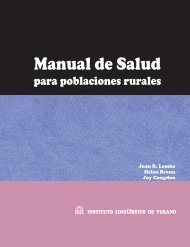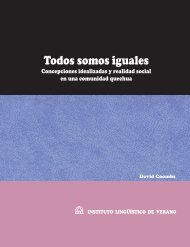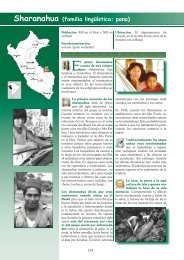A Phonemic Analysis of the Apurinã Language
A Phonemic Analysis of the Apurinã Language
A Phonemic Analysis of the Apurinã Language
Create successful ePaper yourself
Turn your PDF publications into a flip-book with our unique Google optimized e-Paper software.
<strong>the</strong> occurrence <strong>of</strong> [h̃] is both phonologically and morphologically conditioned. In mostcases it could be written non-ambiguously as nasalization <strong>of</strong> <strong>the</strong> following vowel:[ι'nikʌ] /ι'nika/ 'he eats' [h̃ι̃'nikʌ] /ι̃'nika/ 'you(pl) eat'["nι·'nikʌ] /"nιι'nika/ 'he doesn't eat' ["nιh̃ιñi'kʌbε] /''nιιñi'kapε/ 'don't you(pl)eat!'In this way <strong>the</strong> 2nd plural morpheme would have <strong>the</strong> same phonemic shape throughout,[ιn'tapυ] /ι̃'tapo/, [ι̃sι'bεŋka] /ι̃sι'pɛ̃ka/, except where <strong>the</strong> 3rd m. sg. isexpressed by its zero morph. Fur<strong>the</strong>r, <strong>the</strong> negative prefix acts as though it were beingattached to a vowel ra<strong>the</strong>r than a consonant when affixed to [h̃]. The basic form <strong>of</strong> <strong>the</strong>negative prefix is /na-/ which occurs next to consonants. When it is juxtaposed to avowel <strong>the</strong> /a/ drops:[ι·'mʌtʌ] 'he knows' ['nι·'mʌtʌ] 'he doesn't know'[oι'mʌtʌ] 'she knows' ['noι'mʌtʌ] 'she doesn't know'[nι'mʌtʌ] 'I know' ['nanι'mʌtʌ] 'I don't know'Even though one conceded phonemic rank to [h̃] (ra<strong>the</strong>r than postulate a morphologicallydefined allophone) it could be written unambiguously, as previously described, without<strong>the</strong> introduction <strong>of</strong> a new symbol, were it not for <strong>the</strong> few cases where <strong>the</strong> 3rd m. sg. formis already nasalized:[ι̃ã'sυkʌ] /ι̃ã'soka/ 'he hits'[h̃ι̃ã'sυkʌ] /ι̃ã'soka/? 'you(pl) hit'[ιŋ'antʌ] /ι̃'ãta/ he drinks' [h̃ι̃ŋ'antʌ] /ι̃'ãta/? 'you(pl) drink!'There is a definite contrast in pronunciation and meaning. In spite <strong>of</strong> its drasticallylimited distribution, <strong>the</strong> simplest solution seems to be to interpret [h̃] as a unit, aconsonant and a phoneme, and to represent it in <strong>the</strong> orthography with its own symbol.The practical demands <strong>of</strong> a literacy program also incline one to this solution.IV. Contrastive Chart <strong>of</strong> Phonemes:a. Consonantslabial alveolar velarStops p t kNon-ContinuantsalveolaralveopalatalAffricates ȼ čFlaprContinuantsalveolaralveopalatal13


